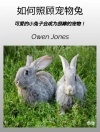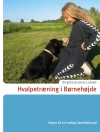William Cavendish, first Duke of Newcastle’s passions included women, music, writing, theatre and, perhaps above all, the finest horses. He was a widely acknowledged expert in the art of the riding horse, and his works laid the foundation for classical dressage. Mastery in horsemanship was the mark of a graceful and accomplished gentleman in the European nobility of the seventeenth century. In the first comprehensive study of Newcastle’s two horsemanship manuals dating from 1658 and 1667, Dr. Elaine Walker explores the insights they offer into riding practice, personal philosophy and motivation. Newcastle’s writing has surprising relevance to the modern rider or any reader interested in the long history of the coevolution of man and horse together. 42 engraved plates after Abraham van Diepenbeeck from the 1658 edition are included along with full translations from the original French manual. “…essential reading for anyone who feels that dressage today comes from the great riding masters of the past…” Peter Maddison-Greenwell, Director of El Caballo de Espana “…a real contribution to knowledge…” Boudewijn Commandeur, Founder of the Horse in Art Database, The Netherlands Institute for Art History. Based in North Wales, Elaine Walker is a writer, academic, and consultant on the horse in cultural history. She discovered western riding and Appaloosa horses while on holiday in Scotland in 1990 and has remained devoted to both. The connection between western riding and the classical tradition was her starting point for researching the practical aspects of Newcastle’s manuals. Elaine Walker researched much of her Ph. D. thesis and the material for this book while mounted. She has given several displays and talks in Newcastle’s own riding house at Bolsover Castle in Derbyshire. When she is not writing or riding, she is a performing singer and musician.
Table des matières
Contents
Chapter 1 Introduction 1
Chapter 2 ‘Also he recreates himself with his pen’: Newcastle as writer. 25
Chapter 3 ‘Of the several Authors that have Written of Horsemanship’:
Newcastle’s manuals in the European context. 48
Chapter 4 ‘The Epitome of Horsemanship’: Newcastle’s Method ‘Anatomized’. 69
Chapter 5 ‘Après l’homme le cheval est le plus noble animal’:
Newcastle and the horse’s mind. 91
Chapter 6 ‘A strange conceit of a Great Master’: Newcastle’s plates as virtual reality. 106
Chapter 7 Conclusion. 158
Appendix : Prefatory material and verses from La Methode Nouvelle (1658). 170
Bibliography 187












